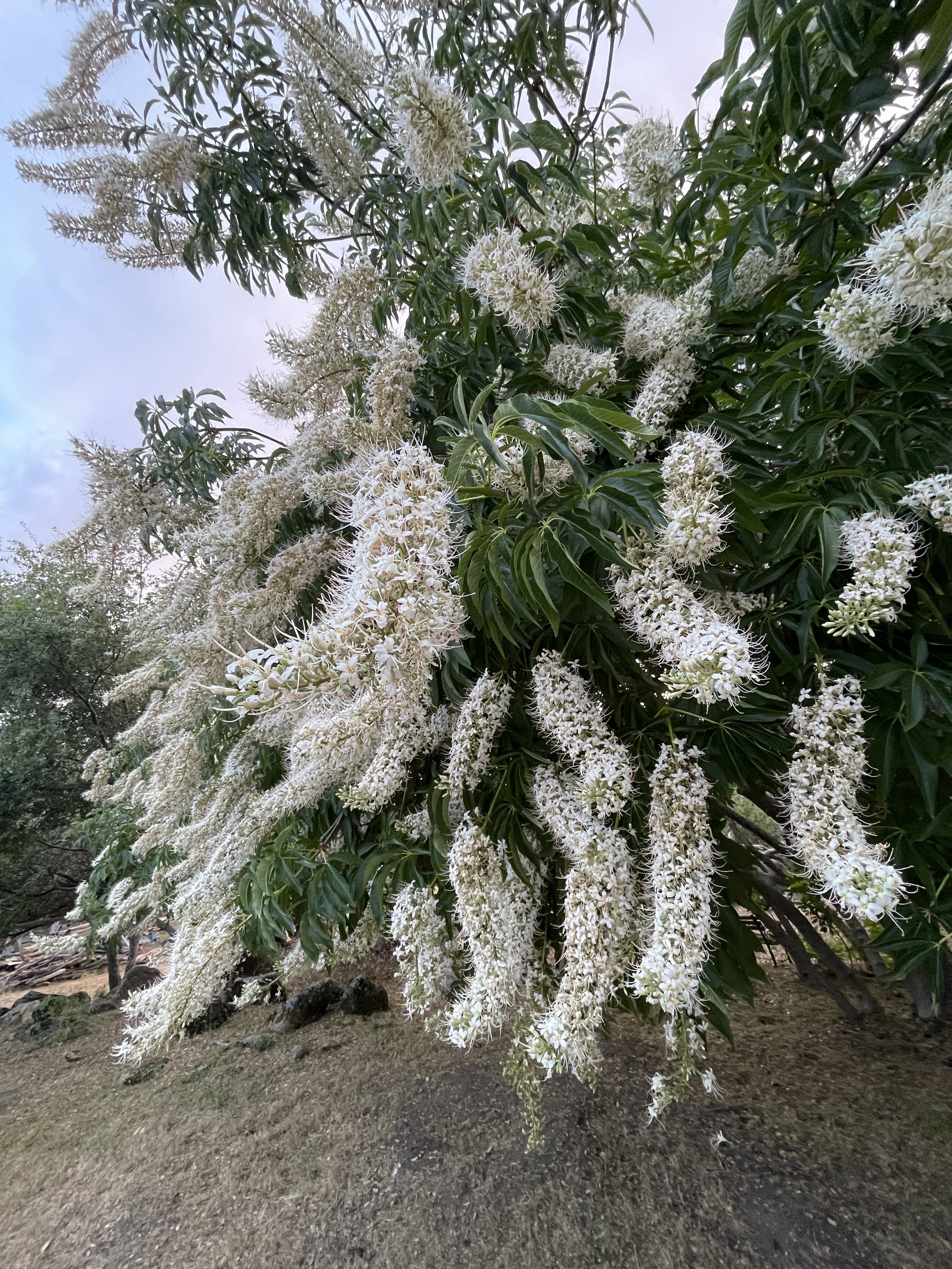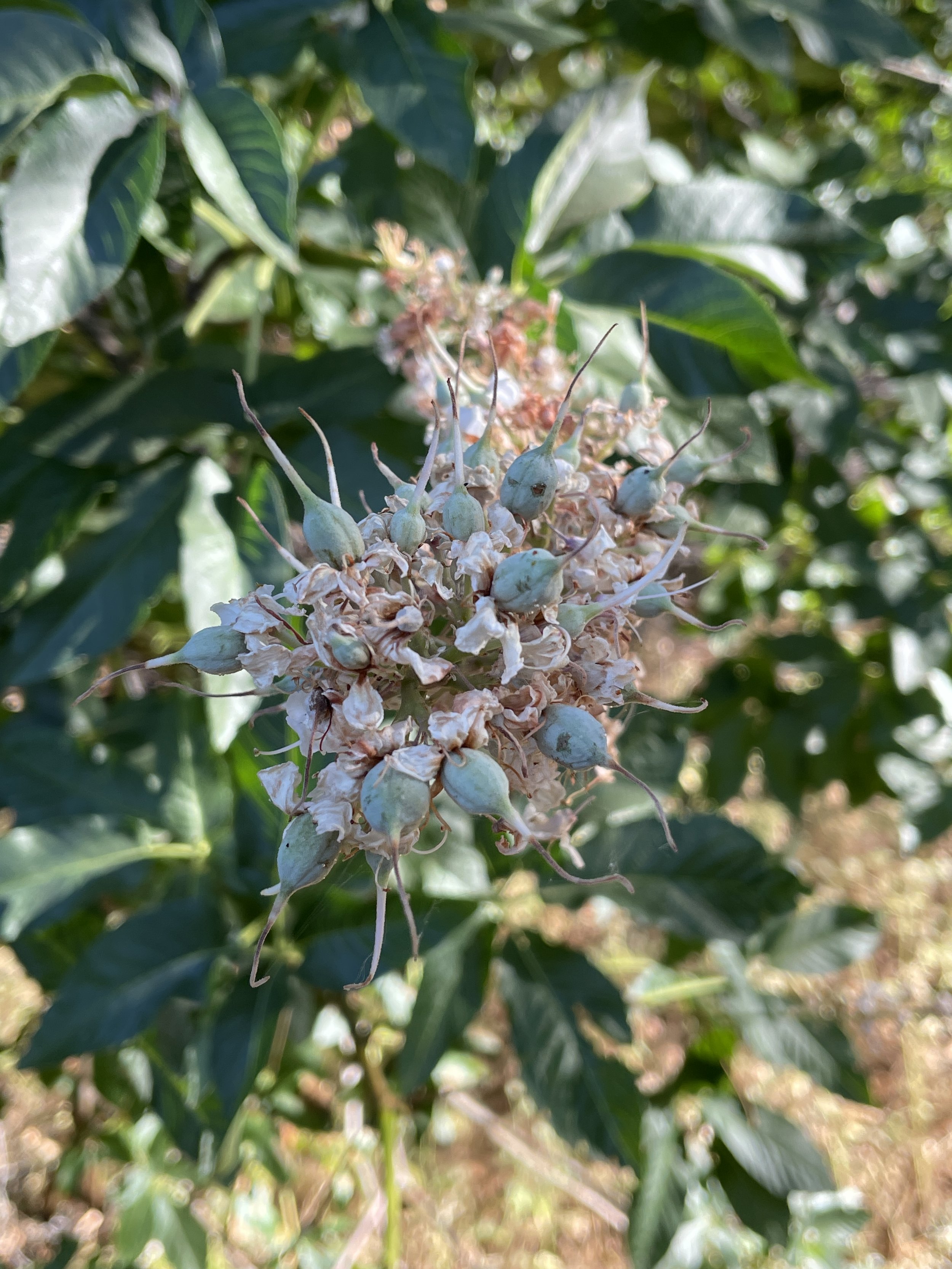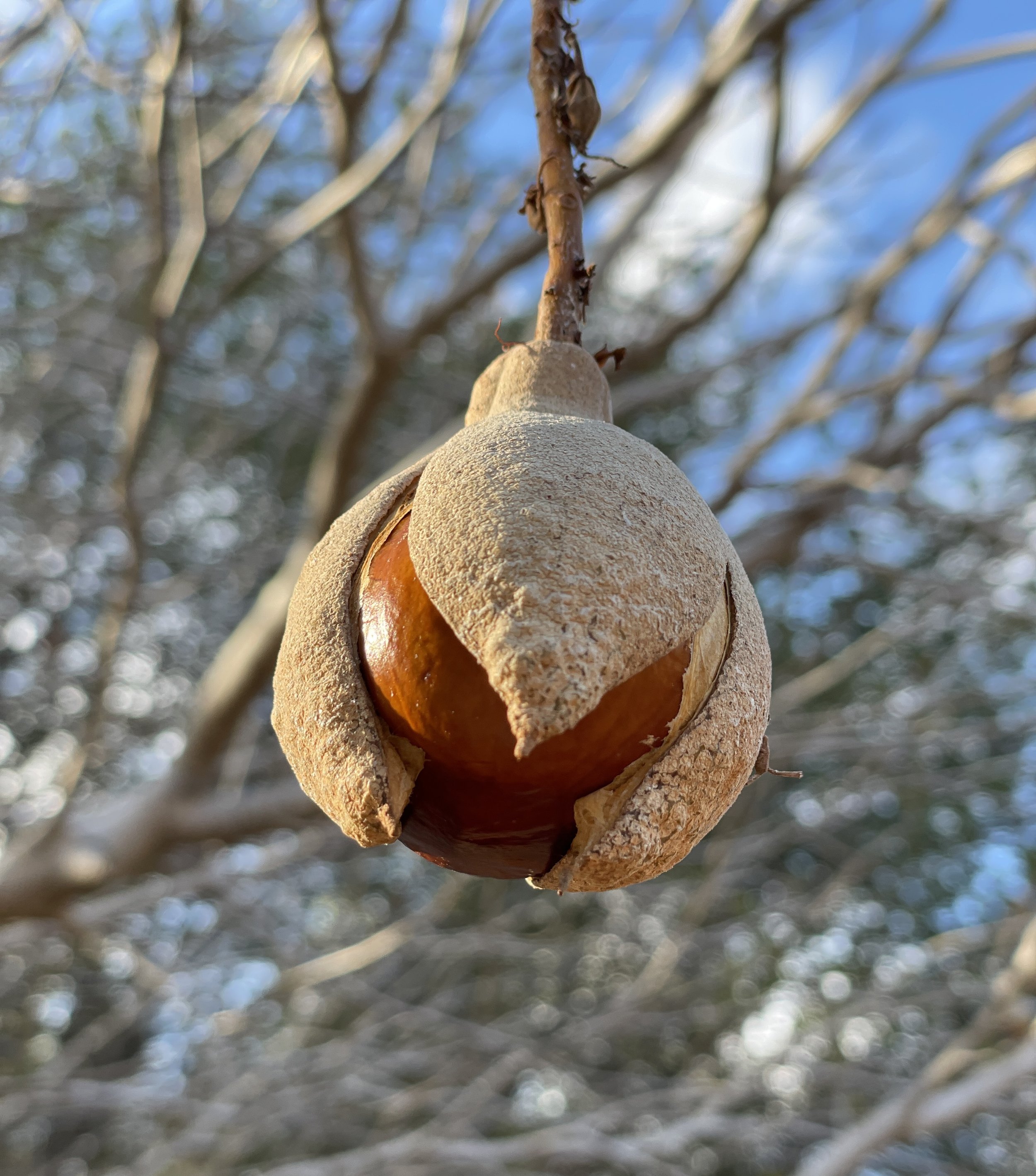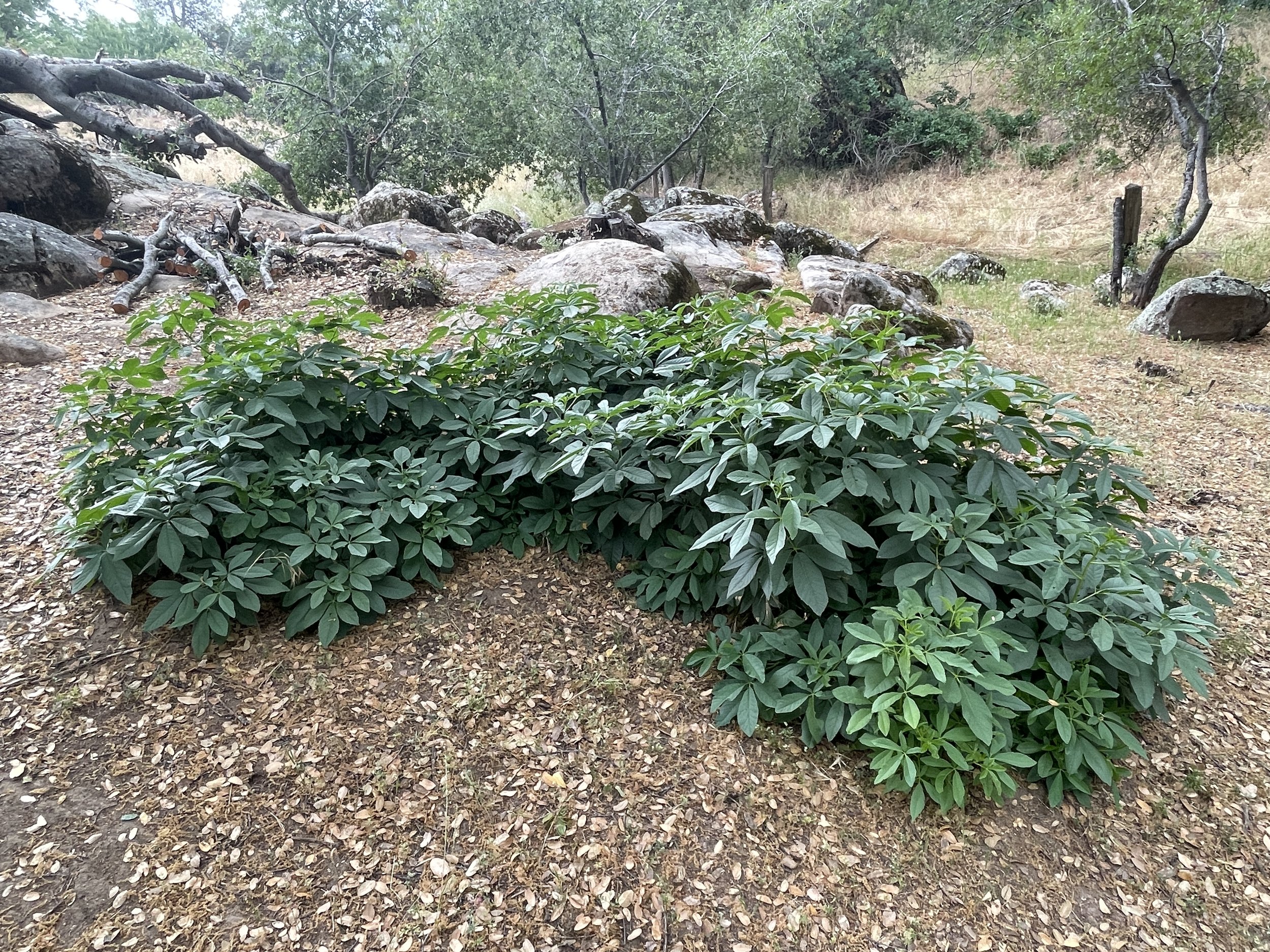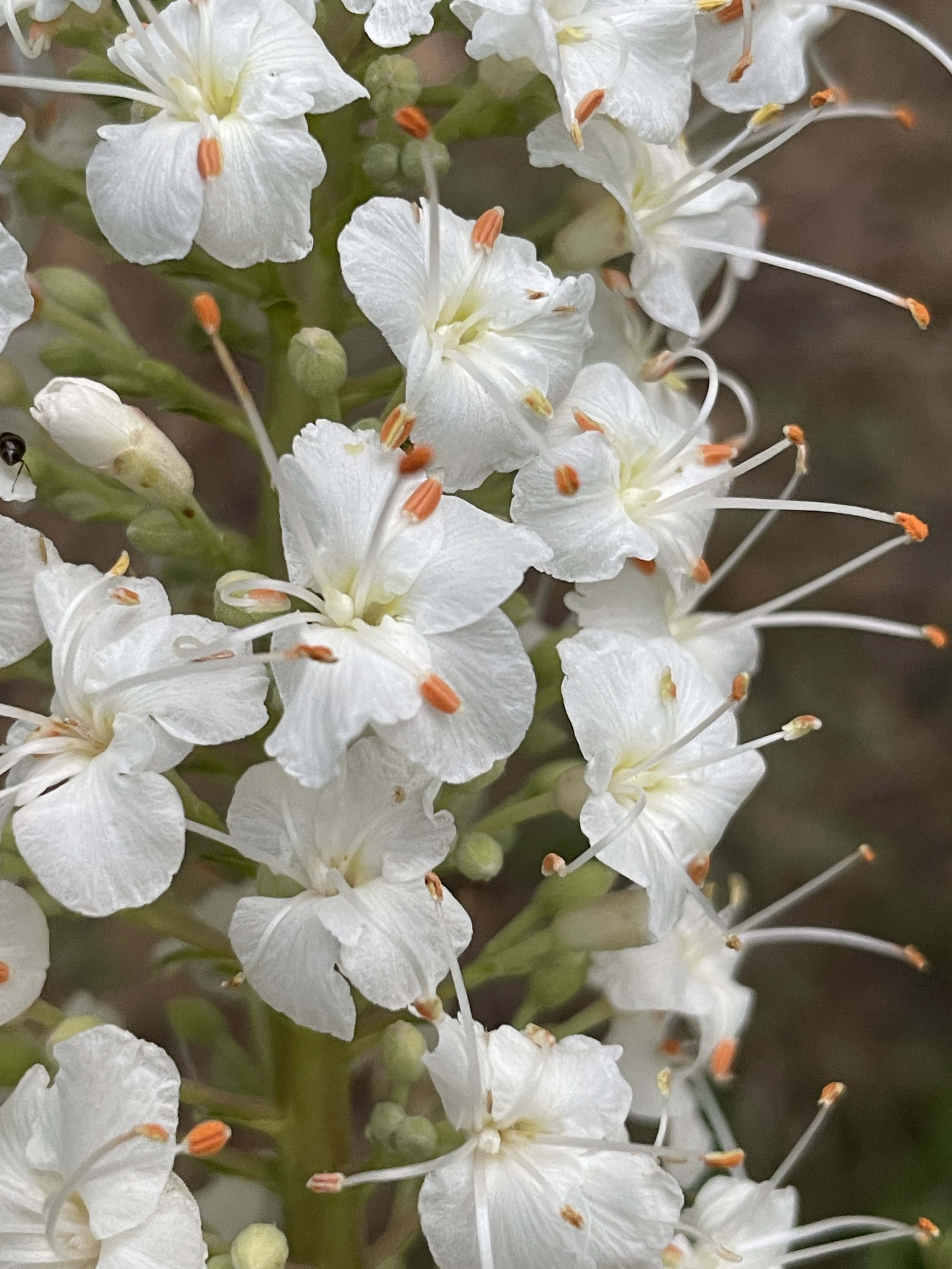
California Buckeye Aesculus californica woyonobi
California Buckeye is shrub-like; often several stems will rise from a common root. Its flowers bloom in May and June.
The raw Buckeye balls are poisonous, but California Native Americans leached the seeds, then ground them into flour for cooking. Unleached seeds had another native use. Fish were diverted into pools with the use of rock walls, and ground Buckeye balls were thrown into the water. The seeds released chemicals that stupefied the fish which could then be collected with minimal effort. (Paruk, 64)
By midsummer the tree has shed its leaves and entered dormancy in preparation for the hot, dry months ahead. With the leaves absent, the pear-shaped fruits, containing one large, two-inch seed, hang noticeably.
The resemblance of the glossy brown seed to the eye of a male deer is the probable origin for the popular name ‘buckeye’
Description:
Size: large bush or tree, to 25 feet
Bark: light-gray, thin and smooth
Leaves: composed of 5-7 leaflets, 3-7 inches long, spreading like fingers on a hand, on a long, 4-5 inch leaf stem
Fruit: 2-3 inches, pale brown, smooth, leathery, and ball shaped, maturing in late summer
“One time I was talking to my sister-in-law on the phone and telling her I had just collected a bunch of Buckeye balls with my kids for a craft project. She was mortified! She wanted to know what I could possibly be making that would need buck ‘eyeballs’…….”
“These beautiful trees are also tenacious! If you have to cut one down they will come back with a vengeance. Nobody leaves these babies in the corner!”


